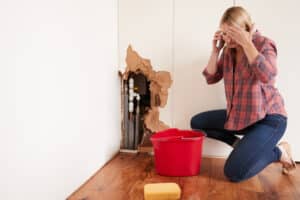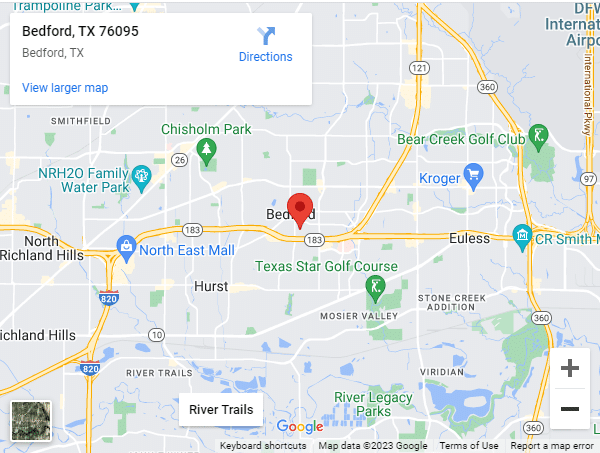As a homeowner in Bedford, TX, one of the most daunting issues you can face is a plumbing leak. With all the water wasted and the potential for extensive damage to your property, leaks can quickly turn into nightmares if left unattended. By understanding the common types of household plumbing leaks, their signs, and how to prevent them, we can help protect our precious resources and keep our homes in top condition.
Regular plumbing maintenance, such as inspecting your pipes and fixtures regularly, can help catch potential plumbing issues early. Additionally, replacing old or worn-out plumbing components can help prevent leaks from occurring, saving you time, money, and stress in the long run. In this blog, we will explore typical household plumbing leaks, their warning signs, and the steps you can take to prevent them from occurring.
1. Dripping Faucets
There’s a good chance that you have encountered a dripping faucet at some point in your home. Frequent causes of dripping faucets include worn-out rubber washers, corroded valve seats, or loose parts. A dripping faucet is not only an annoyance, but it can also waste considerable amounts of water over time, leading to higher water bills.
Detecting: Fortunately, detecting a dripping faucet is relatively easy – simply observe the faucet when it is turned off, and if you see water dripping from the spout, you have a leak.
Preventing: To prevent a faucet from leaking, make sure to keep up with routine maintenance, such as replacing worn-out parts like washers and O-rings when necessary. You can also consider upgrading older faucets to new, water-efficient models that use advanced technology to reduce water waste.
2. Leaking Toilets
Toilet leaks can be more challenging to detect, but if left unaddressed, they can also lead to higher water bills and wasted water.
Detecting: One method for detecting a toilet leak is to add a few drops of food coloring to the toilet tank and wait for about 10 minutes. If the color appears in the toilet bowl, you have a leak. Another sign of a toilet leak is hearing the sound of water running even when the toilet isn’t in use.
Preventing: Regular maintenance of your toilet’s components can help prevent leaks. Check the flapper, fill valve, and other parts for wear and tear and replace them as needed. Additionally, check for a warped or damaged flush valve, as this can also cause leaks.
3. Pipe Leaks
Pipe leaks can develop for various reasons, including age, corrosion, and pipe material. If not promptly detected and repaired, they can lead to significant water damage.
Detecting: Signs of a pipe leak include water stains on walls or ceilings, mold or mildew growth, a musty odor, or an unusually high water bill. In some cases, you may hear the sound of water running even when no appliances or fixtures are in use.
Preventing: Keep up with routine plumbing maintenance, including regularly inspecting your pipes for signs of wear, corrosion, or damage. If you live in an older home, consider upgrading your plumbing system to new, more durable materials like copper or PEX piping, which have a longer lifespan and are less prone to leaks.
4. Hidden Leaks
Sometimes, plumbing leaks can go undetected for extended periods due to their hidden location behind walls or under floors. If not discovered and repaired in a timely manner, these leaks can cause significant damage to your home’s structure and promote mold growth.
Detecting: Hidden leaks may be discovered during routine home inspections, or you may become aware of them when you notice changes in your home environment, such as an increase in humidity, a musty smell, or a sudden spike in your water bill.
Preventing: Regularly inspect the areas around your home’s plumbing system, such as behind appliances and under sinks, for any signs of moisture, mold, or water damage. By catching these issues early, you can take steps to repair the problem and prevent further damage.
Conclusion
Plumbing leaks are a common issue faced by most homeowners, but they can be detected and prevented with vigilance and routine maintenance. Understanding the various types of household plumbing leaks and their warning signs can help you take action to address the issue before it escalates into a costly and damaging problem.
Whether it’s a dripping faucet, a leaking toilet, or a hidden pipe leak, taking the necessary steps to address these issues will save you money on water bills, protect your precious water resources, and extend the life of your plumbing system.
For expert guidance and assistance in detecting and preventing plumbing leaks in your home, don’t hesitate to contact us at Professor Pipes Plumbing & Backflow. Our skilled and experienced plumbers in Bedford, TX, can help you address all your plumbing concerns, ensuring that your home remains in top condition and that your plumbing system operates efficiently.



















